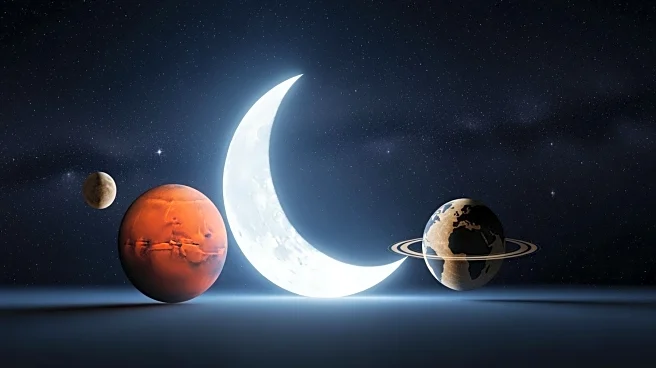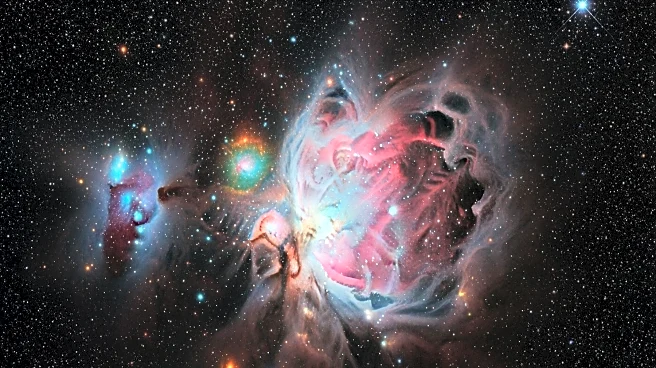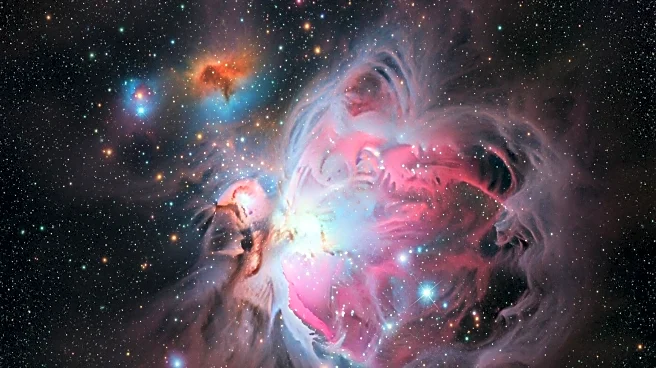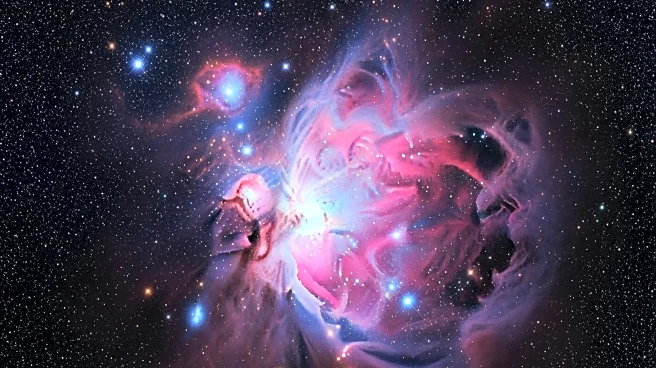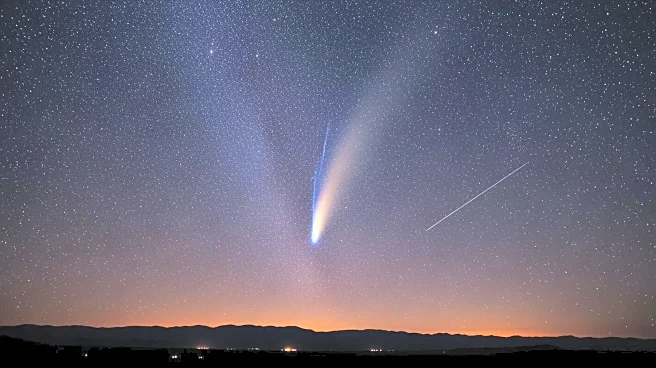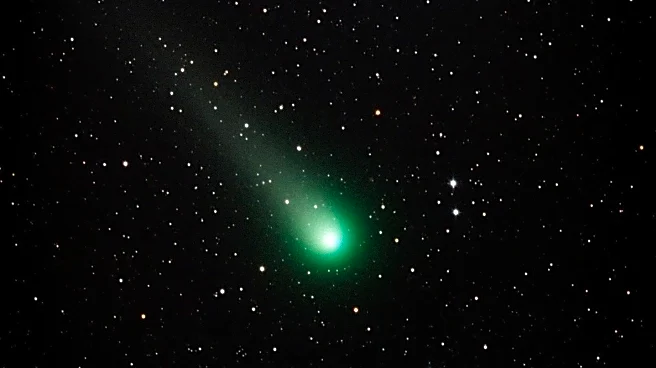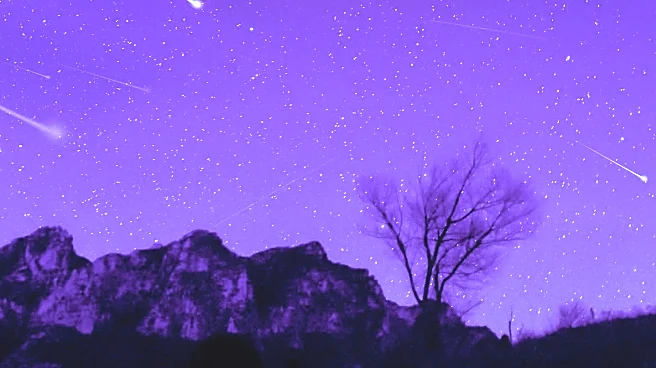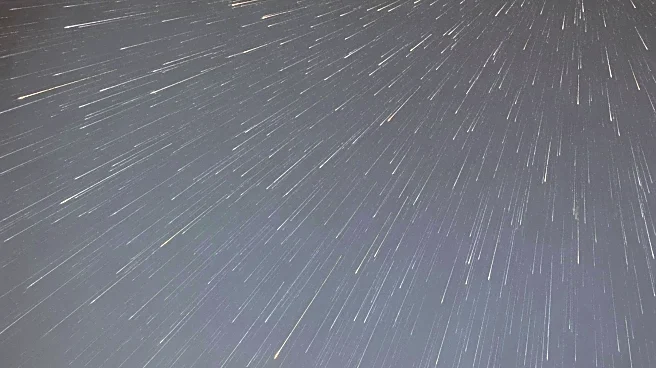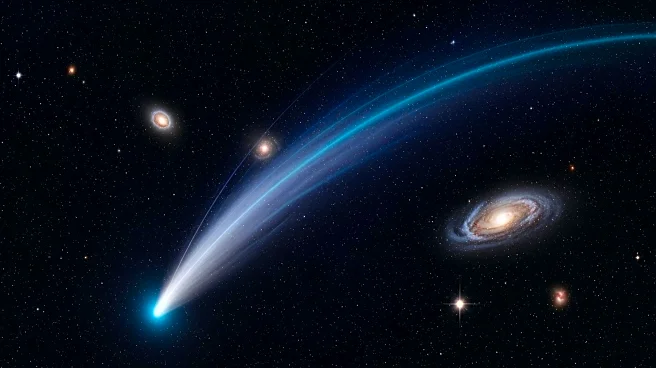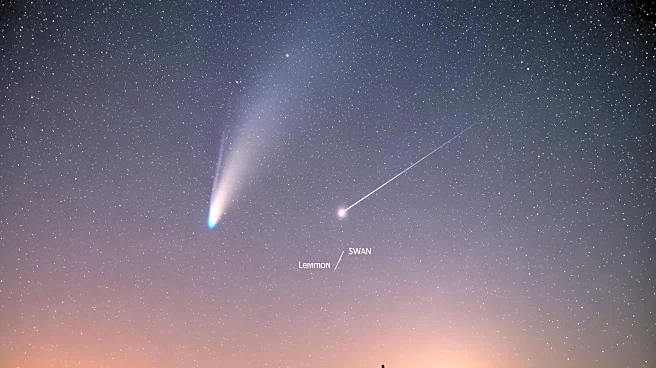What's Happening?
On October 22, the Moon will pass close to Mars and Mercury, creating a unique viewing opportunity for stargazers. The Moon will be 5° south of Mars and 2° south of Mercury, reaching its orbital apogee
at 406,445 km from Earth. Observers with a clear southwestern horizon can view the Moon, Mercury, and Mars as a low-lying triplet approximately 3° above the horizon just after sunset. Mercury, shining at magnitude -0.2, will be identifiable with binoculars and will exhibit a 73-percent-illuminated disk. Mars, at magnitude 1.4, will require optical aid for optimal viewing, appearing as a virtually fully illuminated disk.
Why It's Important?
This celestial event offers a rare chance for astronomy enthusiasts to observe the Moon's close approach to two planets. Such events can enhance public interest in astronomy and provide educational opportunities for schools and amateur astronomers. The visibility of Mercury and Mars alongside the Moon can help observers understand planetary motion and the dynamics of celestial bodies. This event also highlights the importance of clear skies and unobstructed horizons for optimal stargazing experiences.
What's Next?
Following this event, stargazers can look forward to other astronomical phenomena, such as the California Nebula and upcoming meteor showers. These events continue to offer opportunities for observation and study, encouraging ongoing interest in astronomy. Observers are advised to check local weather conditions and plan their viewing accordingly to maximize their experience.
Beyond the Headlines
The Moon's apogee, being the farthest point from Earth in its orbit, can affect tidal patterns and has implications for understanding lunar motion. Such events can contribute to scientific research and data collection, aiding in the study of gravitational interactions and orbital mechanics.
